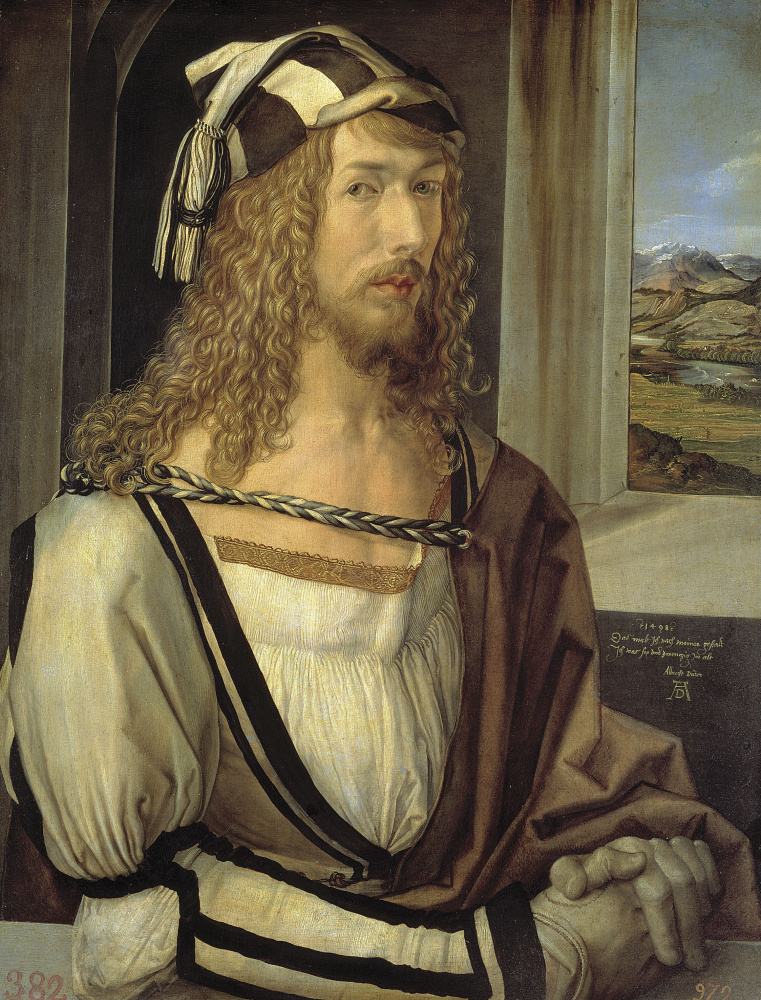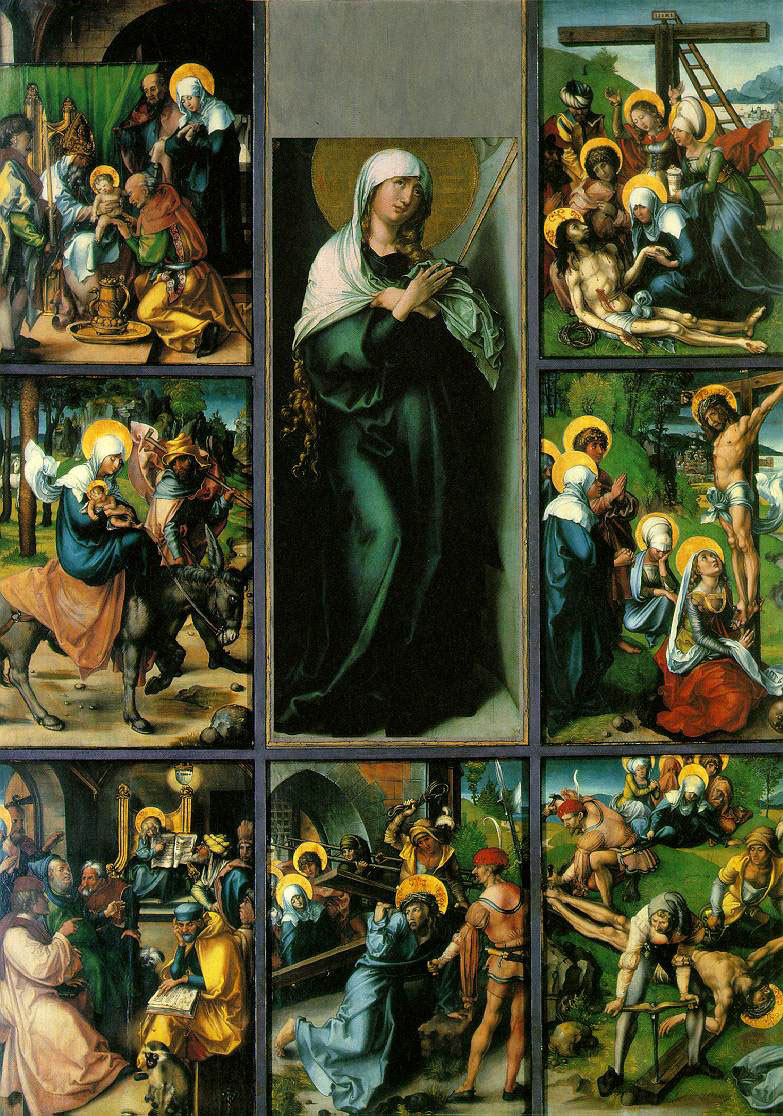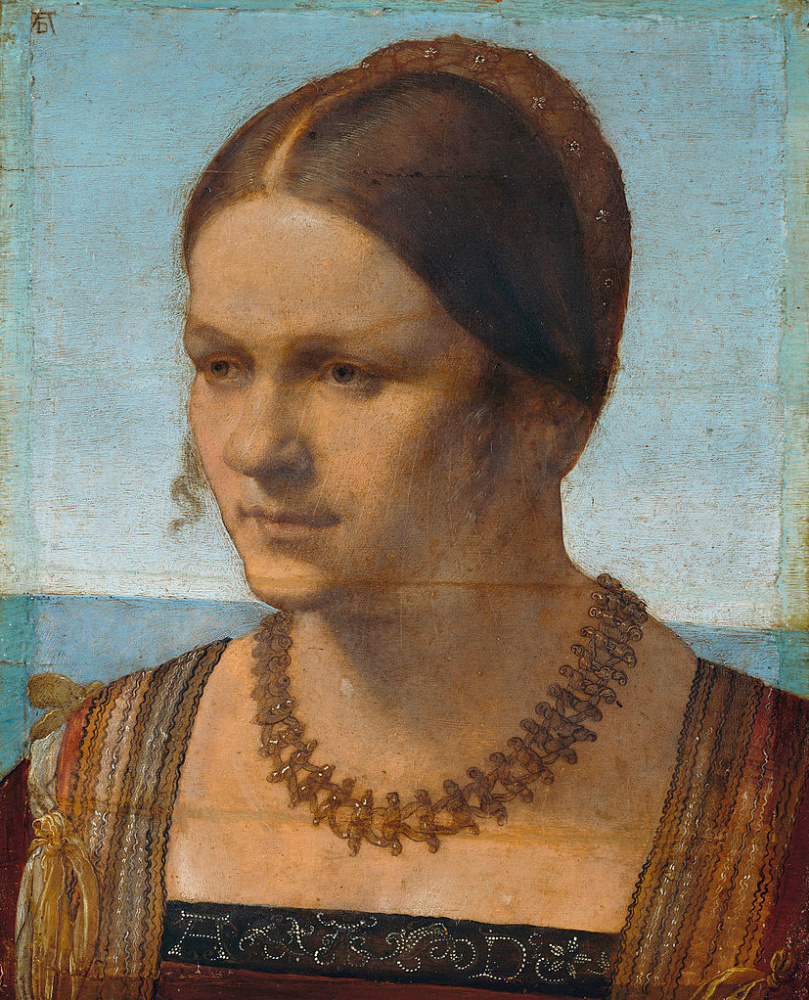A monographic exhibition ALBRECHT DÜRER e il Rinascimento fra la Germania e l’Italia (ALBRECHT DÜRER and the Renaissance
between Germany and Italy) will be on view at Palazzo Reale (Royal Palace) in Milan from February 21 to June 24, 2018.

From 21st February to 24th June 2018 the museum complex of Palazzo Reale in Milan presents an exhibition dedicated to Albrecht Dürer (1471−1528), genius of the Northern Renaissance
in Germany. Сurated by Bernard Aikema in collaboration with Andrew John Martin, the display will focus on Dürer's relationship with Italy and the artistic panorama of the cities of Venice, Rome, Mantua and Ferrara.
Featuring a selection of his paintings and graphic works, the exhibition will show mutual impact of the Italian and German art in 16th century. Dürer was the first artist who brought the influences of the Flemish and Italian aesthetics into Germanic art. His oeuvre formed a unique bridge between the arts north and south of the Alps, for the artist, being influenced by Italian art, has exerted as much influence on Italian art in return.
Featuring a selection of his paintings and graphic works, the exhibition will show mutual impact of the Italian and German art in 16th century. Dürer was the first artist who brought the influences of the Flemish and Italian aesthetics into Germanic art. His oeuvre formed a unique bridge between the arts north and south of the Alps, for the artist, being influenced by Italian art, has exerted as much influence on Italian art in return.
Self-portrait
1498, 41×52 cm
The son of a Hungarian goldsmith, Albrecht Dürer was born in Nuremberg in 1471, and was meant to follow in his father’s footsteps. First started as an an apprentice in his dad’s workshop, he, however, switched to painting and xylography by working in Michael Wolgemut’s atelier between 1486−1490.
The crucial turning point in his artistic life has happened between 1490 and 1494, when he travelled in the Upper Rhine region and visited Basel, Strasbourg and Colmar. As a young painter, Albrecht was a great admirer of Martin Schongauer's work, who drew his aesthetic inspiration from the Flemish late Gothic painting by Rogier van der Weyden and Jan van Eyck. Dürer had planned to enter Schongauer’s workshop in Colmar but discovered upon his arrival that the great master has recently died.
So, Albrecht Dürer decided to enrich his artistic learning by traveling to northern Italy where he stayed until 1495. He often visited Mantua and met Andrea Mantegna, who belonged to the first generation of Renaissance artists and aimed at a truthful use of mimesis through depicting bright and material bodies, together with the use of Alberti’s perspective. Albrecht also became familiar with much else in a lively and fervid cultural climate of Italy, including the art works of the Bellini brothers and Leonardo da Vinci.
The crucial turning point in his artistic life has happened between 1490 and 1494, when he travelled in the Upper Rhine region and visited Basel, Strasbourg and Colmar. As a young painter, Albrecht was a great admirer of Martin Schongauer's work, who drew his aesthetic inspiration from the Flemish late Gothic painting by Rogier van der Weyden and Jan van Eyck. Dürer had planned to enter Schongauer’s workshop in Colmar but discovered upon his arrival that the great master has recently died.
So, Albrecht Dürer decided to enrich his artistic learning by traveling to northern Italy where he stayed until 1495. He often visited Mantua and met Andrea Mantegna, who belonged to the first generation of Renaissance artists and aimed at a truthful use of mimesis through depicting bright and material bodies, together with the use of Alberti’s perspective. Albrecht also became familiar with much else in a lively and fervid cultural climate of Italy, including the art works of the Bellini brothers and Leonardo da Vinci.
Seven sorrows of the virgin Mary
1490-th
By his second visit to Italy in 1505−07, Dürer's name had already spread there through the prints of his engravings on wood and copper. His images were immediately recognizable, and his prints were so popular that it went to their extensive pirating. But his style continued to blossom under the influence of ancient and modern Italian art.
An intriguing example of how Dürer adaptated Italian models is the equestrian monument of Roberto Malatesta attributed to Eusebio da Caravaggio, an Italian Renaissance sculptor. Once standing in the old basilica of St. Peter’s in the Vatican, it is now kept in the Louvre. Dr. Kristina Herrman Fiore, former director of the Borghese Gallery in Rome, plausibly argues that this late 15th-century work was a primary source for one of the Dürer's most famous prints, Knight, Death and the Devil (1513), originally titled Rider (Reiter).
An intriguing example of how Dürer adaptated Italian models is the equestrian monument of Roberto Malatesta attributed to Eusebio da Caravaggio, an Italian Renaissance sculptor. Once standing in the old basilica of St. Peter’s in the Vatican, it is now kept in the Louvre. Dr. Kristina Herrman Fiore, former director of the Borghese Gallery in Rome, plausibly argues that this late 15th-century work was a primary source for one of the Dürer's most famous prints, Knight, Death and the Devil (1513), originally titled Rider (Reiter).
Albrecht Dürer discovered Giovanni Bellini's colourism and tonal painting between 1505 and 1507, while living in Venice. Albrecht knew him personally and studied the theoretical and practical aspects of his aesthetics.
In the "Feast of the Rosary" (1506) the German artist put what he had learned from the Venetian Renaissance into practice. He complemented his linear painting with a certain magnificence of color under the Venetian treatment of light which gave more realistic intersection among different color ranges and enriches the color palette, as it was in Bellini’s paintings.
However, his meticulous axial symmetry, which highlights the geometrical structure of the work, and his rendering figures in detail, with the ornamental aspects typical of the Flemish iconography, prevailed over the Italian influence. He hasn’t absorbed the real significance of Italian Renaissance , but remained essentially a Northern artist, the greatest draughtsman, thinking always in terms of line.
In the "Feast of the Rosary" (1506) the German artist put what he had learned from the Venetian Renaissance into practice. He complemented his linear painting with a certain magnificence of color under the Venetian treatment of light which gave more realistic intersection among different color ranges and enriches the color palette, as it was in Bellini’s paintings.
However, his meticulous axial symmetry, which highlights the geometrical structure of the work, and his rendering figures in detail, with the ornamental aspects typical of the Flemish iconography, prevailed over the Italian influence. He hasn’t absorbed the real significance of Italian Renaissance , but remained essentially a Northern artist, the greatest draughtsman, thinking always in terms of line.
The feast of the rosary (feast of the rose garlands)
1506, 162×194.5 cm
The upcoming exhibition highlights the mutual relationships between art works of Albrecht Dürer and that of his great contemporary masters: Cranach, Giorgione, Lorenzo Lotto and others, through drawings, engravings, paintings and graphics.
Even small prints by Dürer inspired Italian artists to create their large canvases. In Venice there was probably none of the major painters who remained untouched by him: from Giovanni Bellini, Cima and Vittore Carpaccio to Giorgione, Lorenzo Lotto, Titian, Tintoretto and Veronese. And there were many Tuscans as well who owed a clear debt to the Nuremberger: Andrea del Sarto, Jacopo Pontormo, Domenico Beccafumi and Agnolo Bronzino.
Dürer's treatise "Of Human Proportion," written in German, was translated into Latin and Italian and became a perennial mainstay of Italian art education.
Albrecht Dürer was more than a genius artist, he can be called the first meeting point between Northern and Southern European art for he blended of the finest Flemish sensitivity with the Italian chromatic power.
Even small prints by Dürer inspired Italian artists to create their large canvases. In Venice there was probably none of the major painters who remained untouched by him: from Giovanni Bellini, Cima and Vittore Carpaccio to Giorgione, Lorenzo Lotto, Titian, Tintoretto and Veronese. And there were many Tuscans as well who owed a clear debt to the Nuremberger: Andrea del Sarto, Jacopo Pontormo, Domenico Beccafumi and Agnolo Bronzino.
Dürer's treatise "Of Human Proportion," written in German, was translated into Latin and Italian and became a perennial mainstay of Italian art education.
Albrecht Dürer was more than a genius artist, he can be called the first meeting point between Northern and Southern European art for he blended of the finest Flemish sensitivity with the Italian chromatic power.
Portrait of a young Venetian woman
1506, 28.5×21.5 cm
Written on materials of Palazzo Reale Milano, ecodelbunker.wixsite.com, moodbook.com, 1000quadri.it, the New York Times. Title illustration: Albrecht Dürer, Portrait of a Young Venetian Woman, 1505. Kunsthistorisches Museum, Vienna. 35×26 cm.















